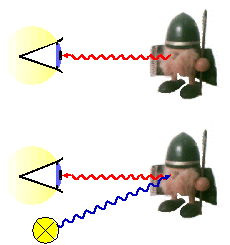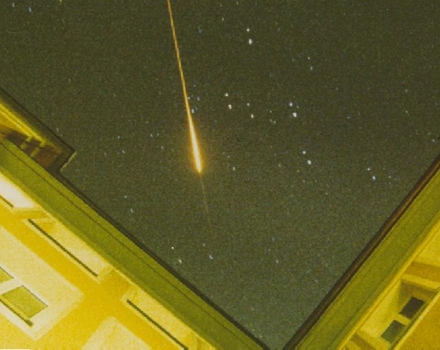Active and Passive Remote Sensing
What does a mongoose and a LITE-telescope in a space shuttle have in common?

Source: NASA Langley Research Center (right)
At first look, these two scenarios may appear totally different from one another. But actually, both techniques fall under the Definition of Remote Sensing. This refers to all processes that involve obtaining information about objects over far distances by measuring the radiation emitted or reflected by said objects. Such radiation may be in the form of visible light. Therefore, we may say that ‘seeing’ is actually a method of remote sensing.
With Remote sensing we can probe and investigate not only objects that are lying on the Earth's surface, but also the upper layers of water surfaces as well as the atmosphere. Not all remote sensing techniques make use of visible light. For instance, infrared cameras work with infrared light which is invisible to the naked eye. Radar operates with microwave radiations which are invisible as well. You can find more information about the electromagnetic spectrum in Chapter 1 of the tutorial Understanding Spectra from the Earth.

When the light that is emitted or reflected by the earth does not suffice for remote sensing, one can switch from passive to active remote sensing, that is, using radiation-emitting devices or substances to produce electromagnetic waves that ‘artificially’ illuminate the Earth's surface. As in the act of ‘seeing’, for example: One would turn on the light when it's too dark to see. This is usually done when taking pictures with a camera: if we have enough daylight, the camera is used passive; at night or when there's not enough daylight, we activate the flash to get adequate lighting.
The mongoose is dependent on the light that is available in his surroundings, a passive method of remote sensing. In contrast, the LITE uses a Laser, which is an active method of remote sensing.
What makes a laser so interesting as a light source for remote sensing? There are several reasons for this:
- with lasers, we can produce radiation in visible, ultraviolet or infrared ranges. Most objects under probe can only be analysed with the use of specific wavelengths of the electromagnetic spectrum, and lasers are excellent for producing intensive radiation with the desired wavelengths.
- compared to a light bulb, the radiation produced by lasers can be adjusted and aligned, which enables us to focus its light on objects over far distances.
Remote sensing devices using lasers are classified as Lidar. The name is alluded to the term Radar - Radio detection and ranging, which works with radiowaves (another term for microwaves). Lidar, however, works with radiation within the range of visible light. The acronym stands for Light detection and ranging.

Source: Teramobile
In this tutorial we shall introduce and explain...
- ... how does a lidar work, what are its components and how is it put to use
- ... what is a laser and what characteristics make laser light so special
- ... the process of transmitting the light beam of a laser on to an object, collecting and concentrating the light produced by said object, and then breaking it down to its spectral elements and measuring its intensity.
- ... and which properties of the Earth's surface, oceans and atmosphere can be analysed by using lasers.
